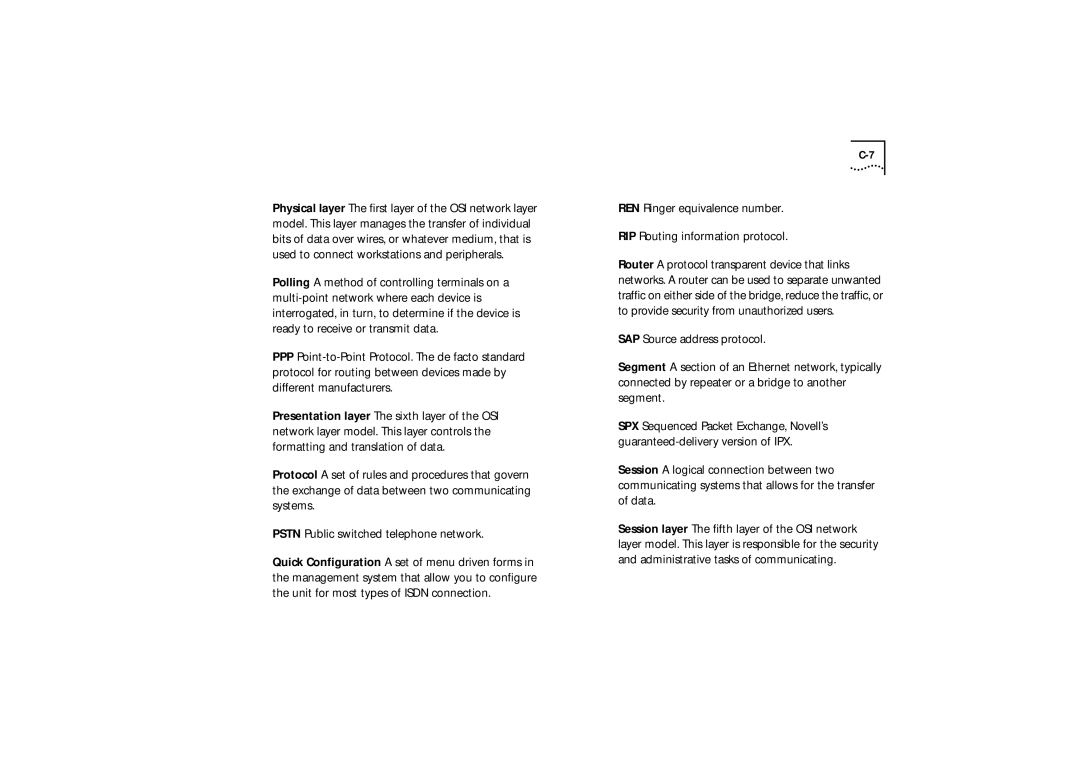Physical layer The first layer of the OSI network layer model. This layer manages the transfer of individual bits of data over wires, or whatever medium, that is used to connect workstations and peripherals.
Polling A method of controlling terminals on a
PPP
Presentation layer The sixth layer of the OSI network layer model. This layer controls the formatting and translation of data.
Protocol A set of rules and procedures that govern the exchange of data between two communicating systems.
PSTN Public switched telephone network.
Quick Configuration A set of menu driven forms in the management system that allow you to configure the unit for most types of ISDN connection.
REN Ringer equivalence number.
RIP Routing information protocol.
Router A protocol transparent device that links networks. A router can be used to separate unwanted traffic on either side of the bridge, reduce the traffic, or to provide security from unauthorized users.
SAP Source address protocol.
Segment A section of an Ethernet network, typically connected by repeater or a bridge to another segment.
SPX Sequenced Packet Exchange, Novell’s
Session A logical connection between two communicating systems that allows for the transfer of data.
Session layer The fifth layer of the OSI network layer model. This layer is responsible for the security and administrative tasks of communicating.
